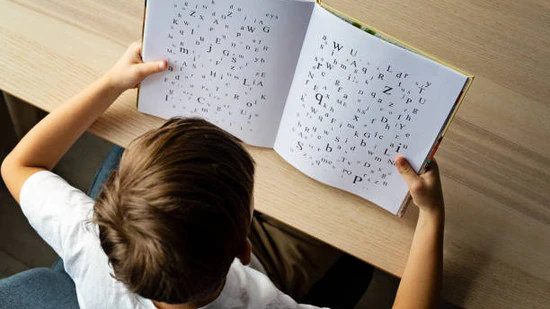
Dyslexia is a neurological condition that interferes with an individual’s ability to decode written words. It is considered a reading learning disability and can seriously impact a person’s reading speed and comprehension skills. Proper diagnosis allows parents and educators to implement support strategies that facilitate learning. Therefore, early identification of the disorder through symptom recognition and testing is crucial to helping dyslexic individuals succeed in school.
Early Signs of Dyslexia
There appears to be a genetic factor in the disorder, and most individuals who receive a dyslexia diagnosis are born with it. Therefore, you may notice very early signs in young children. However, since it is directly connected to word and written language recognition, you may notice signs of the disorder once children enter a formal school setting. Here are some of the most common signs to be aware of in children.
Preschoolers
Common signs of dyslexia and other reading disorders in preschoolers include:
- Inability to spell or write their name
- Trouble learning the alphabet and recognizing letters
- Shows no interest in following along with stories
Although you may notice these signs, they are commonly mistaken for normal childhood behavior, an inability to stay focused, or not being ready to master a specific academic task like reading. However, if children are not progressing with basic skills, such as recognizing and spelling their names, it could be a sign that something is amiss.
Grade School Students
Once children enter primary school, teachers expect them to have mastered several skills, like reading level-appropriate material. Teachers may notice students struggling more than others with reading fluency or comprehension, which is often a sign of dyslexia. Others for children in this age range often include:
- Trouble decoding words or understanding that they are the result of construction of smaller parts (phonemes or syllables)
- Unable to connect letters to their sounds
- Using pictures or context clues to come up with words (for example, “reading” kitten instead of cat)
Students showing signs of a reading difference should undergo testing. The new Tests of Dyslexia offers a comprehensive way to check for learning differences.
Additional Indicators of Dyslexia
Children displaying little to no signs of dyslexia may still struggle with learning differences. Identifying risk factors in students can help you spot potential signs that they may be masking with coping strategies. Some examples of factors that increase the likelihood of children receiving a dyslexia diagnosis include:
- Having a parent or close family member diagnosed with dyslexia
- In-utero exposure to certain chemical substances
- Premature birth or low birth weight
The Role of Assessments in Identifying Dyslexia
Parents and educators may miss some early signs of dyslexia or attribute them to normal childhood behavior. However, routine dyslexia assessments and evaluations given to all students with risk factors for the disorder can help identify those who need additional support.
Assessments must account for various factors that affect results in an evaluation, such as variations among students’ backgrounds, possible language barriers, and previous learning outcomes. Visit WPS to learn more about how their assessments meet these requirements to help students succeed in education.




